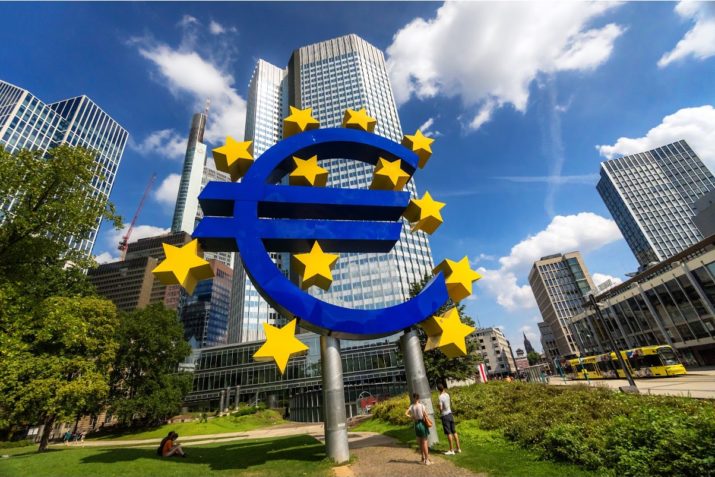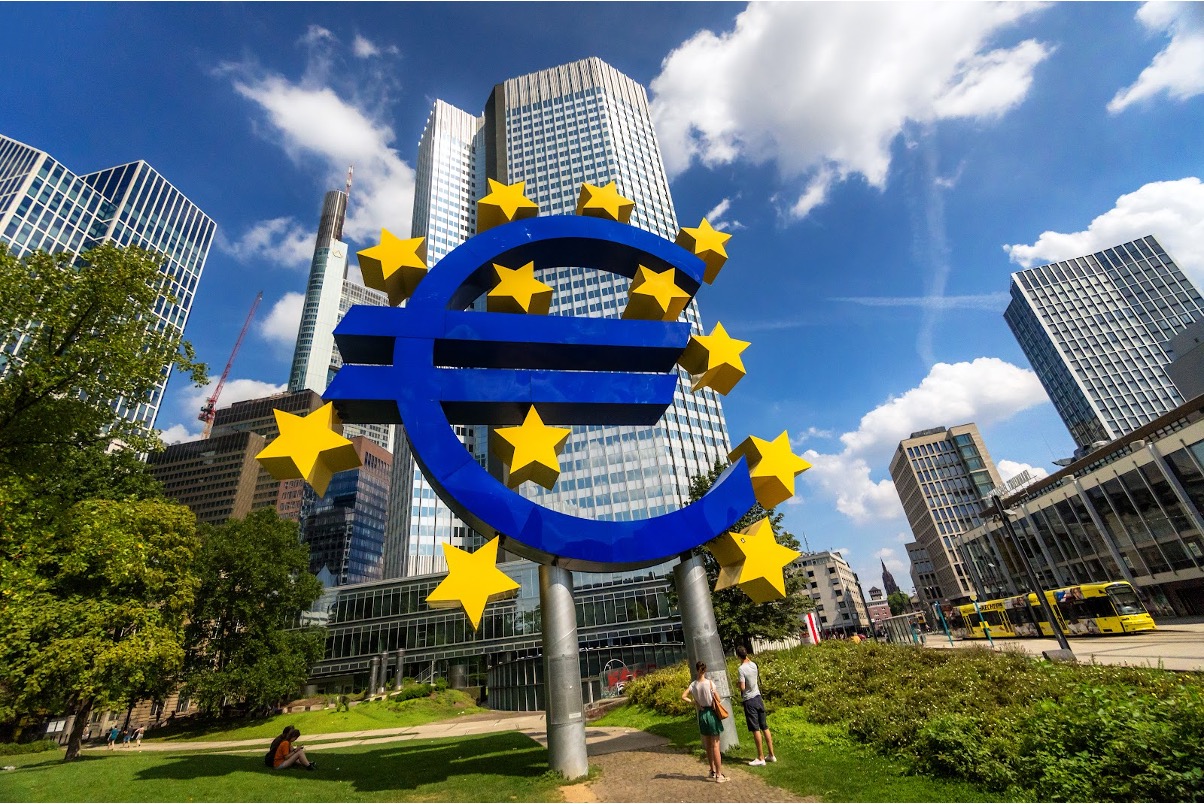

This is part of our special feature, Business in Politics and Society.
The development of monetary and fiscal institutions and policies in the European Union (EU) has always been the subject of significant public and scholarly debate about European integration. This has been even more so since the 2010-12 Eurozone crisis. It was widely perceived as an existential crisis for the EU and was highly salient in public perceptions. In the second half of the decade, French president Emmanuel Macron reintroduced the issue at the top of the policy agenda with his proposal for a Eurozone budget running at several percentage points of GDP. Then the economic crisis triggered by the COVID-19 pandemic led to a decisive breakthrough in the shape of the New Generation EU and the European instrument for temporary Support to mitigate Unemployment Risks in an Emergency (SURE) funds relying on borrowing by the Commission. Although still a bit early for the debate to get into full swing, the lingering question is whether these schemes are the precursors to a permanently expanded EU fiscal capacity with new European taxes and a borrowing capacity.
The scholarly literature on the issue is enormous. The vast majority focuses (understandably so) on intergovernmental dynamics and public opinions. A fair assessment of the field would be that the dominant interpretation of the Eurozone crisis and its aftermath is offered by the mainstream International Political Economy (IPE) interpretation (Frieden and Walter 2017). This builds on the consensus view among economists (Baldwin and Giavazzi 2015) of the crisis as a balance of payments crisis. The IPE interpretation thus focuses on the politics of balance of payments crises opposing creditor and debtor member states over how to share the burden of adjustment. Subsequent developments are understood through the same lens. Although obviously insightful, my research on corporate power in European integration suggests that the dominant intergovernmental analyses of the Eurozone’s development are inadequate because they do not focus on the key actors. In this short article I will highlight how at the three crucial turning points in the history of the Eurozone’s development (the creation of the single currency in the 1990s, the Eurozone crisis, and the 2020 breakthrough), the most powerful member state and its allies, home to highly sceptical public opinion, gave way to the corporate sector’s key demand. When looking at corporate power, scholars follow the distinction between instrumental and structural power (Culpepper and Reinke 2014). The former refers to activities that are not part of corporations’ economic activities: lobbying, the revolving doors between the public and corporate sector, campaign finance and the like. The latter refers to corporations changing their market behavior (or threatening to do so) in response to public policies they do not like. In the case of the Eurozone, as in most other cases, corporations have usually exerted their power instrumentally. But on one crucial occasion, the Eurozone crisis, they had to resort to structural power to get their way.
Creation of the Eurozone
The drive to create the single currency in the late 1980s and 1990s is usually linked to the drive to complete the single market. The Commission’s own literature makes that argument (Emerson, Gros and Italianer 1992). The idea is that a single market will fall apart in the presence of regular and large exchange rate realignments that constantly disturb the structure of relative prices. The EU’s answer to this problem in the 1970s and 1980s, the European Monetary System, was unsatisfactory because it did not supply sufficient exchange rate stability. Gradually, then, policymakers decided that the solution was to eliminate national currencies altogether. A single currency would automatically solve the problem. And so, the political leaders struck a deal at Maastricht in 1991 to create the single currency and European Central Bank (ECB).
The standard intergovernmental interpretation of the Maastricht agreement is that Germany dictated the terms of the deal, namely an independent central bank focused primarily on price stability. The problem with this interpretation is that it accounts poorly for two key aspects of the historical record. German public opinion was highly skeptical. It feared that the single currency would be inflationary due to its incorporation of “profligate” Southerners. For any German government, especially a conservative one whose voters were the most attached to price stability, agreeing to a single currency was politically risky. And then, the German central bank itself, the powerful and esteemed Bundesbank, was opposed because the monetary union would dilute the power it had accumulated over the previous two decades to dictate monetary policy in Europe. The currency it issued and managed, the Deutschmark, was Europe’s most stable and Germany’s pride. It never devalued and so German savers and income earners did not have much to fear from continued monetary fragmentation in the EU. German exporters competed on non-price rather than price factors and so could live with an overvalued currency. There was even a current of opinion that held that the Deutschmark could gradually become Europe’s money. And yet, the German government agreed to the single currency. More than that, it also agreed to the incorporation of all the Southern member states, including Greece. Why?
My answer to the puzzle is that corporate power constrained the German government to do so. The completion of the single market in the 1980s was driven by large corporations in the member states (known as “national champions” then) that wanted to Europeanize their operations. They were no longer interested in national idiosyncratic policies protecting their privileged access to their domestic markets, including national currencies. Those corporations that took advantage of devaluations to export more in the rest of the European market before the 1980s were no longer interested in this. They preferred the stability of a single currency that would allow them to seamlessly plan their pan-European operations. The Commission’s rationale for the single currency thus reflected that of the corporate sector.
This is no surprise given the close contacts it had with the corporate pressure group set up to campaign for the single currency, the Association for the Monetary Union of Europe (AMUE). AMUE counted former Commission president François-Xavier Ortoli among its founders and former vice-president Etienne Davignon as its long-standing president. AMUE also comprised many German heavyweights from across the sectoral spectrum. Crucial in this respect were the big universal banks: Deutsche, Dresdner and Commerz. They joined the AMUE early on (1987-89) and played a crucial role in convincing Helmut Kohl, the German chancellor, to accept the single currency (Collignon and Schwarzer 2003). The AMUE saw the Bundesbank and ordoliberalism, which is highly influential among German academic economists and conservatives, as the main obstacles to the single currency.[1] The AMUE thus concentrated its public relations efforts in Germany. It held more than half of its public meetings there and it did so in close alliance with the Commission, which relied on it to sway hesitant national leaders.[2] Instrumental power proved enough to overcome German opposition to the creation of the single currency.
Eurozone crisis
To overcome opposition, the corporate sector also played a tactical game designed to appease the single currency’s opponents, mostly located in Germany. AMUE leaders understood that a single currency without a federal fiscal capacity would be unsustainable in the long run. This stemmed, among other things, from the close contacts AMUE had with Alexandre Lamfalussy, the founding president of the European Monetary Institute (the precursor of the ECB) and one of the leading intellectual architects of the single currency.[3] AMUE leaders also understood that campaigning for such a capacity would be “overcharging the project,” which “might sink it”[4]. German conservatives opposed to a “transfer union” and British and French conservatives attached to national sovereignty, all of them already opposed to the single currency, would have mounted even harder opposition. AMUE also accepted the ECB’s independence and the Stability Pact to assuage German hard money skeptics.
All of this meant that member states stood fiscally on their own, without the backing of their central bank, from 1998 onwards. National fiscal liability was the price paid for the single currency. When the crisis hit Greece in 2010, the Eurozone’s architecture was put to the test. The choice was to allow Greece (and by extension, other Southern member states that were in dire fiscal straits) to default, or to breach the rules and bail them out, mutualizing to different degrees their fiscal liabilities.[5] Although there is no space here to explain the technical details, the most important thing for readers to understand is that this can and has been done using the central bank’s balance sheet. Waltraud Schelkle (2014) has called this “fiscal integration by default”.
The government in Berlin faced a dilemma. Sticking to the Maastricht blueprint risked a severe financial crisis akin to what had followed the collapse of Lehman Brothers in September 2008. It therefore decided to solve the dilemma by having its cake and eating it too. Greece was bailed out in May, but Merkel extracted a few months later, in November, the infamous Deauville deal, by which orderly debt restructuring procedures would be introduced for Eurozone debt from 2013 on. This was intended to signal to investors that bailouts were a one-off and that market discipline would be reinstated as the governing principle for Eurozone debt.[6]
Europe’s financial corporations, the main holders of the debt, were not pleased. Deutsche Bank’s CEO, Joseph Ackermann, lobbied Merkel and the Commission and European Council presidents tirelessly but failed to sway the German leadership. ECB executives failed, too. The public opinion pressures on Merkel were too powerful. Corporate instrumental power failed in this case. The corporate executives thus resorted to the “crisis mode” of power at their disposal, structural power, by going on a “credit strike”. They started offloading the bonds of Southern member states. Their message to the political leadership was that the promise they had received earlier on – that the debt would be repaid in full – had been broken and that therefore they could not be expected to honor their part of the deal, namely, to hold onto those bonds.[7]
By late 2011, Berlin accepted to rescind the Deauville deal. But this time, the corporate elites would not simply accept a vague promise. They demanded a concrete commitment to an unlimited backstop of all Eurozone debt. Merkel was in trouble. She knew her coalition could fracture beyond repair if she assented to outright fiscal liability mutualization. She therefore accepted that the best solution would be to allow the ECB to step into the breach and provide that unlimited guarantee. Crucially, this did not require a Bundestag majority. This may explain why she agreed to have a Social Democratic Party of Germany (SPD) member, Jörg Asmussen, designated as ECB executive board member in January 2012. He replaced Jürgen Stark, a conservative ordoliberal who resigned the previous December in protest at the Bank’s willingness to buy Eurozone debt in order to assuage investors. Asmussen had no ordoliberal fetishes about moral hazard. During his brief stint at the ECB, he would emerge as a leading proponent of unconventional policies designed to hold the Eurozone together. And he would later join the boards of several corporations and become managing director of Lazard (a prestigious investment bank) in Frankfurt.
The crucial moment came the following summer. Mario Draghi (another former state official who had joined a leading financial corporation before becoming Banca d’Italia governor and then ECB president in November 2011) liaised with the government in Berlin and obtained tacit backing for his move. At an investor conference in London in July 2012, he said the Bank would do “whatever it takes” to preserve the Eurozone. The following September, his institution announced a new policy instrument (the Outright Monetary Transactions) that promised to buy unlimited numbers of bonds of member states in fiscal distress. The credit strike quickly ceased. Financial investors gradually returned to the Eurozone bonds they had been offloading during the previous 20 months.
The COVID-19 crisis
“Whatever it takes” really meant that the Maastricht blueprint was history. One way or the other, the EU would have to develop common fiscal powers to go along with the single monetary policy. Intellectually, the case for this had been made countless times since the 1970s. Now the corporate elites had put the matter on the policy agenda. And they were conveying privately to Commission officials that they wanted to see progress made.[8] After the speculative crisis subsided in 2012, the German Christian Democrats wanted to forget about the matter. Their SPD coalition partner was more forthcoming, but the political opportunity structure offered no opening. Macron’s proposals revived the debate but yielded nothing substantial. It would take another crisis to force the Christian Democrats to budge.
The COVID-19-related economic crisis did the trick and the changed makeup of the government coalition in Berlin, with an SPD politician as finance minister, helped. Olaf Scholz had replaced Wolfgang Schaüble (a Eurofederalist but also staunchly conservative Christian Democratic Union of Germany stalwart) in 2018 and kept looking for opportunities to move the debate forward. He had, for example, suggested (without backing from the Chancellor) a European unemployment reinsurance scheme a few months after assuming office. His right-hand man and effectively deputy finance minister, Jörg Kukies, was the key intellectual force behind these attempts. In August 2018, as Merkel was dragging her feet in the negotiations with Macron, Kukies told the Financial Times (Chazan and Brunsden 2018) that “We clearly support the idea that a currency area also requires fiscal instruments”. I would argue that this was unsurprising, given Kukies’s professional background as an investment banker with Goldman Sachs.
In March 2020, as most of Europe was shutting down, the opportunity to shift Berlin’s stance came. But first, the ECB provided the necessary cover by renewing its commitment to “do whatever it takes”. It launched a new bond-purchasing program (the Pandemic Emergency Purchase Program) and relaxed its rules to be able to deviate from proportional purchases of member state bonds and thus support the Southern member states. While waiting for outright “fiscal integration” to be introduced, “fiscal integration by default” would remain the order of the day. Corporate-friendly advocates of “fiscal integration” then exploited the fact that the crisis could not be blamed on the profligacy of Southern member states to make the case that this time was different from ten years earlier and that ordoliberal moral hazard considerations were irrelevant. Merkel’s early resistance to proposals from the usual suspects (France, Italy, Spain, and their allies, including this time some Eastern member states and the Baltics) for common borrowing quickly evaporated. By May (less than two months after she told the European Council that common borrowing was her red line) she agreed to the Commission borrowing vast sums to fund grants to hard-hit member states. Europe’s main employers’ federations backed the proposal, as did the European Round Table of Industrialists, Europe’s preeminent corporate lobby (ERT 2020). The German conservatives’ and ordoliberals’ dreaded “Transfer Union” was becoming reality thanks to corporate urging. The Financial Times reported that Kukies was the key driver behind the change of course and that for him “the fund is a key milestone on the road to a full European fiscal union – to an EU with the powers not only to issue bonds but also raise its own revenues” (Chazan 2020).
Corporate power is an odd subject of scientific inquiry. Public discourse and perceptions tend to attribute to it wide influence over politics and public policy. The aftermath of the 2008 crisis generated an enormous amount of commentary about too big to fail banks dictating policy to governments. The widening and persistent income and wealth inequalities are foremost among public preoccupations and are generally attributed to corporate power. And yet, political scientists themselves have been reluctant to investigate it fully – in Europe in particular. The financial crisis did spark a new wave of corporate power research, but this did not really look beyond the immediate cases of the bank bailouts and banking power. In European integration studies, attempts to use the concept of corporate power have been too few and far between to amount to anything more than a collection of isolated individuals trying to make progress.
I therefore wish to use the opportunity to offer this outline of the findings of my research into corporate power and the Eurozone’s development to make the case that this is a fruitful avenue for innovative research into European integration. European integration specialists can draw inspiration from the admittedly much more long-standing and solidly entrenched tradition of studying corporate power in the United States and in American political development. To give just one example of an entirely neglected dimension that could be probed using concepts and techniques developed in the United States context: there is little to no literature on the role and influence of the Brussels think-tank bubble (CEPS, Bruegel, EPC) and other prominent brain trusts (ECFR, IFRI) or business foundations (Bertelsmann) on the course of integration. American sociologists and political scientists who study the American corporate elite have spent considerable energy studying what they refer to as the “policy-planning network”, its influence and the way it fits into the web of corporate political influence (see Domhoff 2022, chapter 4, for the state of the art). This pool of scholarly endeavor offers many concepts and methods we could usefully borrow to study European integration and the European Union.
Christakis Georgiou is a researcher affiliated with the Centre de Compétences Dusan Sidjanski en Etudes Européennes at the Global Studies Institute of the University of Geneva. His research focuses on the involvement of large corporations in European integration.
References
Baldwin, R. and Giavazzi, F. (eds). 2015. The Eurozone Crisis. A Consensus View of the Causes and a Few Possible Solutions, CEPR Press.
Chazan, G. and Brunsden, J. 2018. “Germany cools on Macron eurozone budget proposal”. Financial Times. 30 August.
Chazan, G. 2020. “The minds behind Germany’s shifting fiscal stance”. Financial Times. 9 June.
Collignon, S. and Schwarzer, D. 2003. The Power of Ideas: Private Sector Involvement in the Euro. Routledge.
Culpepper, P. D. and Reinke, R. 2014. “Structural Power and Bank Bailouts in the United Kingdom and the United States”. Politics & Society, 42(4): 427-454.
Domhoff, G. W. 2022. Who Rules America?. Routledge (8th edition).
Emerson, M., Gros, D. and Italianer, A. 1992. One Market, One Money. Oxford University Press.
ERT. 2020. “Press Release: European industrial leaders support the Next Generation EU recovery plan”. 10 June. https://ert.eu/wp-content/uploads/2020/06/2020-06-10-European-industrial-leaders-support-the-Next-Generation-EU-recovery-plan-PRESS-RELEASE.pdf
Frieden, J. and Walter, S. 2017. “Understanding the Political Economy of the Eurozone Crisis.” Annual Review of Political Science, 20(1): 371-390.
Schelkle, W. 2014. “Fiscal Integration by Default”. Genschel, P. and Jachtenfuchs, M. (eds) Beyond the Regulatory Polity? The European Integration of Core State Powers. Oxford University Press.
1 Interview with Stefan Collignon, AMUE’s research director, 28 February 2017.
2 Interview with Yves-Thibault de Silguy, commissioner responsible for the single currency in 1995-99, 24 November 2017.
3 Interview with Etienne Davignon, 12 February 2018, AMUE president 1991-2002.
4 Interview with Collignon.
5 This section is based on my “Corporate power and the resolution of the Eurozone crisis”, forthcoming in Politique européenne, 2022/3 (77) (2022 autumn issue).
6 Interview with Thomas Steffen, German deputy finance minister 2012-17, 24 April 2019.
7Interviews with various French executives and former Treasury directors.
8 Interview with anonymous Commission official, 25 April 2019.
Published on November 2, 2022.




